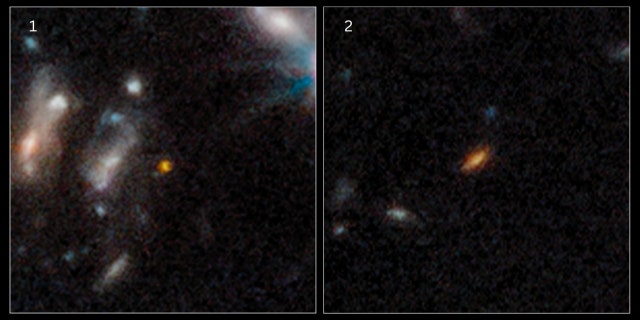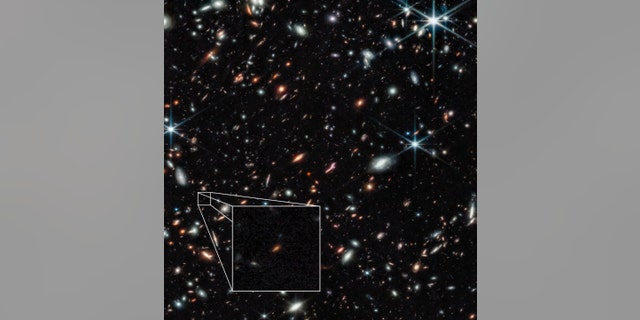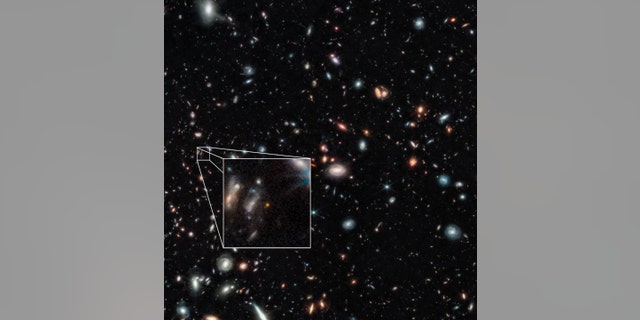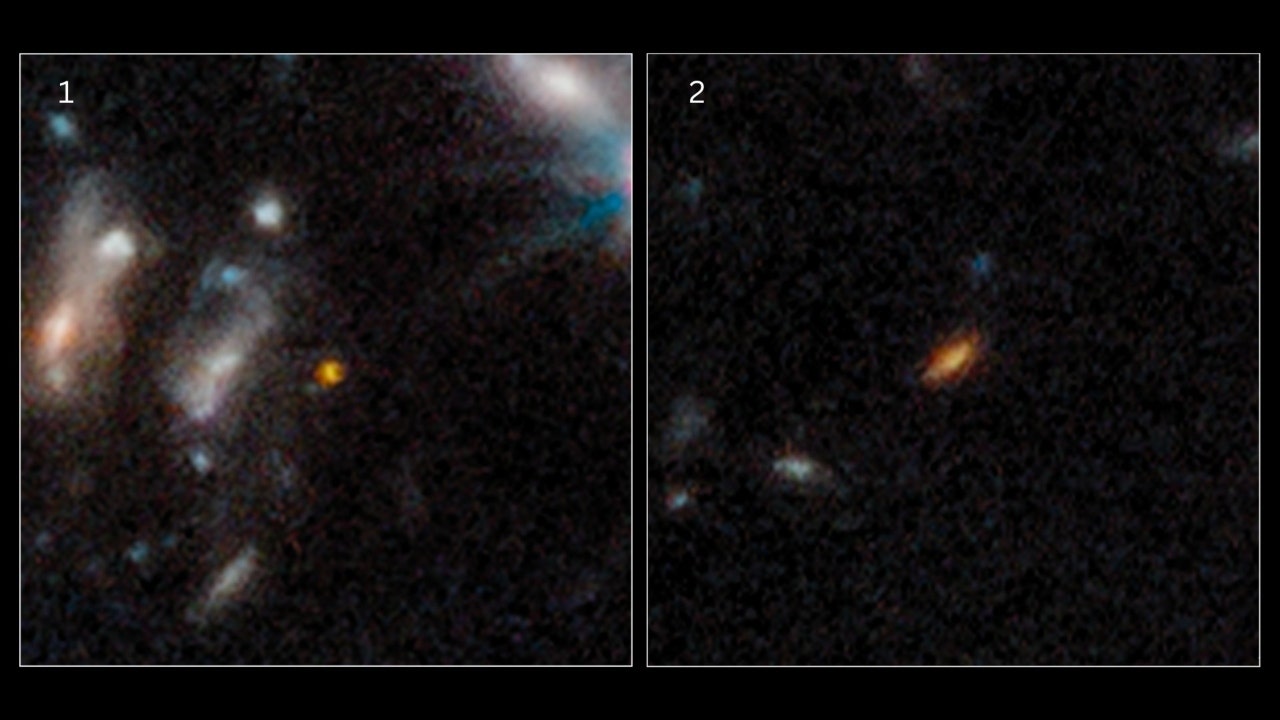In what James Webb Space Telescope researchers call a “whole new chapter in astronomy,” the observatory has helped to locate two early galaxies, one of which may contain the most distant starlight ever seen.
In a tweet, the international team said the unexpectedly bright galaxies could fundamentally alter what is known about the very first stars.
The research – two papers – was published last week in the Astrophysical Journal Letters.
With just four days of analysis, researchers found the galaxies in the images from the Grism Lens-Amplified Survey from Space (GLASS) Early Release Science (ERS) program.
LEONID METEOR SHOWER PEAKS: HOW TO SEE IT
The scientists found that the galaxies existed around 450 and 350 million years after the big bang, though future spectroscopic measurements with Webb will help confirm these initial findings.
Two of the farthest galaxies seen to date are captured in these Webb Space Telescope pictures of the outer regions of the giant galaxy cluster Abell 2744. The galaxies are not inside the cluster, but many billions of light-years farther behind it. The galaxy labeled (1) existed only 450 million years after the big bang. The galaxy labeled (2) existed 350 million years after the big bang. Both are seen really close in time to the Big Bang, which occurred 13.8 billion years ago. These galaxies are tiny, compared to our Milky Way, being just a few percent of its size, even the unexpectedly elongated galaxy labeled (1).
(Credits: Science: NASA, ESA, CSA, Tommaso Treu (UCLA); Image Processing: Zolt G. Levay (STScI))
“With Webb, we were amazed to find the most distant starlight that anyone had ever seen, just days after Webb released its first data,” Rohan Naidu, of the Harvard-Smithsonian Center for Astrophysics and the Massachusetts Institute of Technology, told NASA of the more distant GLASS galaxy – referred to as GLASS-z12 – which is believed to date back to 350 million years after the big bang.
Naidu led one paper and Marco Castellano, of the National Institute for Astrophysics in Rome, Italy, led the other.
The previous record holder is galaxy GN-z11, which existed 400 million years after the big bang.

These two galaxies are thought to have existed 350 & 450 million years after the big bang (left to right). Unlike our Milky Way, these first galaxies are small and compact, with spherical or disk shapes rather than grand spirals.
(Credits: Science: NASA, ESA, CSA, Tommaso Treu (UCLA); Image Processing: Zolt G. Levay (STScI))
“While the distances of these early sources still need to be confirmed with spectroscopy, their extreme brightnesses are a real puzzle, challenging our understanding of galaxy formation,” the University of Geneva’s Pascal Oesch said.
NASA TELESCOPE SHOWS SPECTACULAR HOURGLASS IMAGE SURROUNDING STAR FORMATION
The observations reportedly push astronomers toward a consensus that an unusual number of galaxies in the early universe were much brighter than expected, making it easier for the telescope to find even more early galaxies.

With just four days of analysis, researchers found two exceptionally bright galaxies in the GLASS-JWST images.
(Credits: Science: NASA, ESA, CSA, Tommaso Treu (UCLA); Image Processing: Zolt G. Levay (STScI))
“We’ve nailed something that is incredibly fascinating. These galaxies would have had to have started coming together maybe just 100 million years after the Big Bang. Nobody expected that the dark ages would have ended so early,” said Garth Illingworth of the University of California at Santa Cruz, a member of the Naidu and Oesch team. “The primal universe would have been just one hundredth its current age. It’s a sliver of time in the 13.8 billion-year-old evolving cosmos.”
Illingworth also told the agency the galaxies could have been very massive – with lots of low-mass stars – or much less massive, with Population III stars.
NASA said, as has long been theorized, that these would be the first stars ever born, made up only of primordial hydrogen and helium.

These two unexpectedly bright galaxies could fundamentally alter what we know about the very first stars.
(Credits: Science: NASA, ESA, CSA, Tommaso Treu (UCLA); Image Processing: Zolt G. Levay (STScI))
No such extremely hot, primordial stars are seen in the local universe.
The galaxies are also unusually small and compact, with spherical or disk shapes rather than grand spirals.
CLICK HERE TO GET THE FOX NEWS APP
This discovery of compact disks at such early times was only possible because of Webb’s much sharper images in infrared light.
It said follow-up observations will confirm the distances of the galaxies – which are based on measuring their infrared colors – and that spectroscopy measurements will provide independent verification.
“These observations just make your head explode. This is a whole new chapter in astronomy. It’s like an archaeological dig, and suddenly you find a lost city or something you didn’t know about. It’s just staggering,” Paola Santini, an author of the Castellano-led paper, said.
